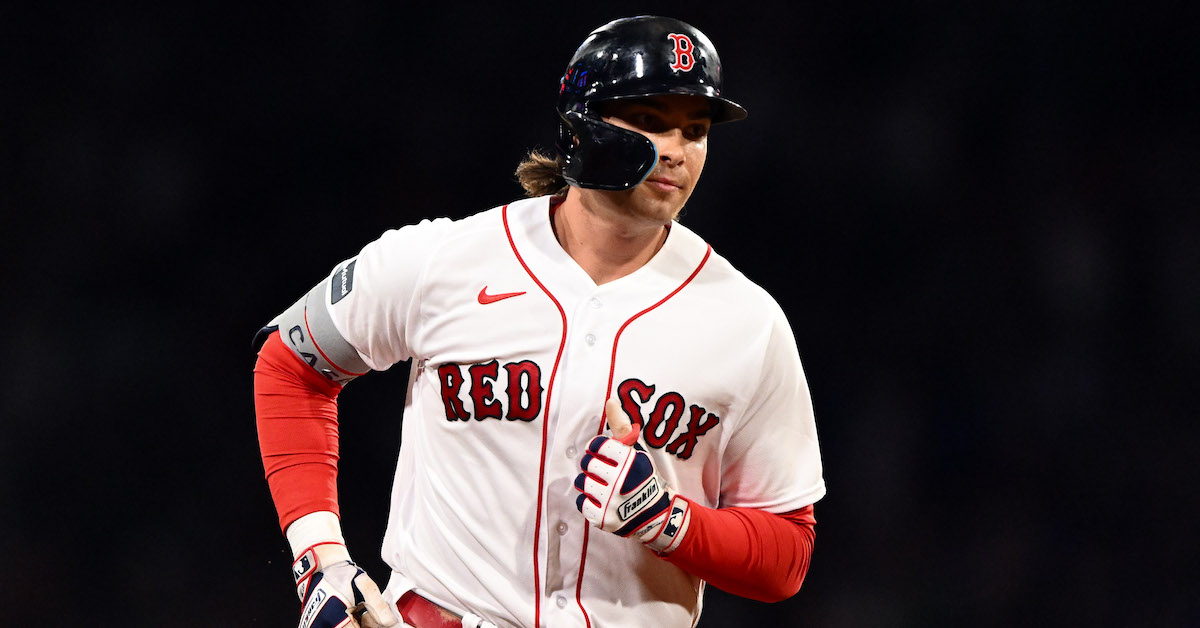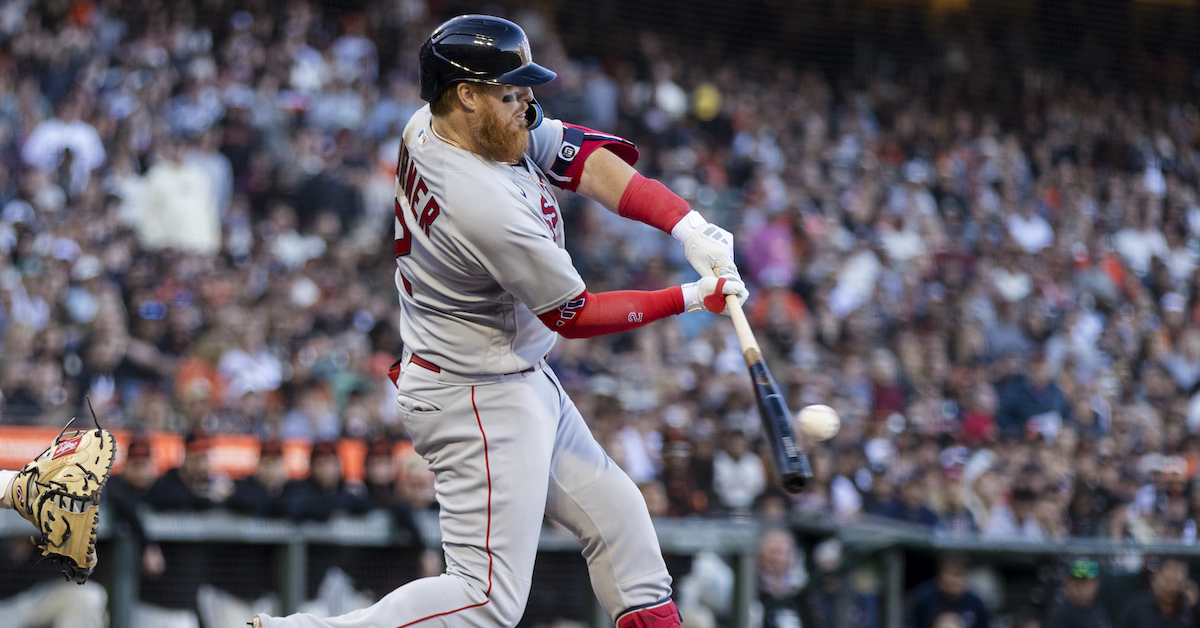Jeff Montgomery Looks Back at Albert Belle and Cleveland’s 1990s Run

Jeff Montgomery faced some formidable Cleveland teams while pitching for the Kansas City Royals from 1988 to ’99. Thanks largely to a robust offense, Cleveland averaged 94.2 wins annually from ’95 to ’99, making the playoffs all five years and twice playing in the World Series. No team in either league scored more runs over that span.
Montgomery, whose 304 saves are the most in Royals franchise history, now serves as one of the team’s broadcast analysts. He sat down to discuss the erstwhile Cleveland powerhouse prior to a recent game at Fenway Park.
———
David Laurila: Mark Gubicza told me earlier this summer that the 1984 Detroit Tigers were the best team he played against. Which was the best team you faced?
Jeff Montgomery: “I look back at teams by how they stacked up against me personally, which is maybe a little different perspective. But those mid-to-late ‘90s Cleveland teams were really deep. They had so many different weapons. It seemed like every time you played against them, if you had a lead, there was a pretty good chance they were going to find a way to cut into it or even overtake that lead. I think their fanbase played a part in that. They created an environment that was almost hostile when you went to Cleveland to play them.
“One game in particular stands out. Our manager told me that I had the night off, so I was sitting out in bullpen that day. We had a left-handed reliever named Billy Brewer, and he goes in and gets what I think was his first major league save. After the game, he came up to me in the clubhouse and said, ‘Man, you can have that job. That’s not a lot of fun.’ [Closing] is different. Personally, it made me better in regard to focus, concentration, and eventually execution, because I knew how great it felt to be shaking teammates’ hands after a game was over. I also knew how bad it felt not to get that last out and feel like you’ve let your teammates down, that you’ve let the fanbase down.
“But again, going back to those days in Cleveland, they had the Alomar brothers, Carlos Baerga, Kenny Lofton, Travis Fryman, Omar Vizquel, Jim Thome, Paul Sorrento, Manny Ramirez… I mean, you could go on with the players they had during that stretch. That was right around the time the divisions were reorganized and there was now a Central Division. They became the team in the Central that was going to be a force, year in and year out. I’m not sure how many years they made it to postseason, but I know they were always contenders. For me personally, going into a game against Cleveland, especially on the road, was a real challenge.”
Laurila: Which player on those teams did you most respect when he came to the plate?
Montgomery: “Well, Albert Belle was such professional hitter. He could hit for power, he could hit for average, and he was also one of those players that loved to be in that big situation. I feel like he kind of got… I don’t want to say a bad rap, but from a personality standpoint… I mean, he was a really bright individual. I got to know him a little bit over the years, us having spring training close to where [Cleveland did], and playing some All-Star games with him. Again, a very bright guy. But he was a beast. He was a guy that was going to do everything he possibly could to try to beat you and help his team win a baseball game. So, he stands out quite a bit for the impact he had, how good he made their lineup.
“Another one, obviously, was Manny Ramirez. The way he was able to handle a bat from the right side… I mean, he was one of the best right-handed batters in baseball for a long time.”
Laurila: Can you share any Albert Belle stories?
Montgomery: “Again, he was a beast. I remember one time, I’m going to guess around 1989 or 1990, I forget the exact year, we had a benches-clearing brawl in Cleveland. Albert Belle put a hurt on one of our pitchers. Well, in spring training the next year, our pitching coach indicated that it was a good time to take care of business with Belle. I threw a pitch that was probably going to hit him in the neck if he didn’t swing. He swung and hit a line drive home run out of our spring training facility in Haines City, Florida. It almost tore out three rows of bleachers. It was an embarrassing moment for me, because here’s a guy that turns on my best fastball, one that’s supposed to knock him down, and he hits it for a home run.”
Laurila: Knocking Belle down and having him charge the mound wouldn’t be an enviable scenario for a pitcher.
Montgomery: “Neal Heaton did that once. We’d had a benches-clearing brawl the day before, and Neal was trying to retaliate. I don’t think he actually hit him, I think he threw three balls behind him. After the third one, Belle took off after Neal. I remember Mike Macfarlane grabbed him, and he pretty much just drug Mac out to the pitcher’s mound. It was one of those crazy, crazy brawls. There was some blood shed in that one.”
Laurila: It sound like McFarlane saved Heaton from some serious damage.
Montgomery: “Well, Neal still got a pretty good beating out there. And I actually did hit him once. It wasn’t Albert Belle’s fault, but I had to hit him. I hit him right in the cheeks. They had a guy named Mark Whiten. Do you remember him?”
Laurila: I do. Hard hittin’ Mark Whiten.
Montgomery: “Yes. Well, Whiten hits a ball to the first baseman, and I’m covering the bag. Whiten veers off to fair territory to give me the bag, I’m a half step ahead of him, and he pushes me, flips me into right field. My rule of thumb was that if you were trying to hurt or embarrass me or one of my teammates, I was going to take care of business. The next batter was Albert Belle. I think everybody in the ballpark knew what was going to happen. I drilled him. But I did it the right way; I hit him right in the wallet. He dropped that bat and stared out at me, I thought he was coming after me, but luckily he didn’t. Thankfully he just jogged to first base.”








